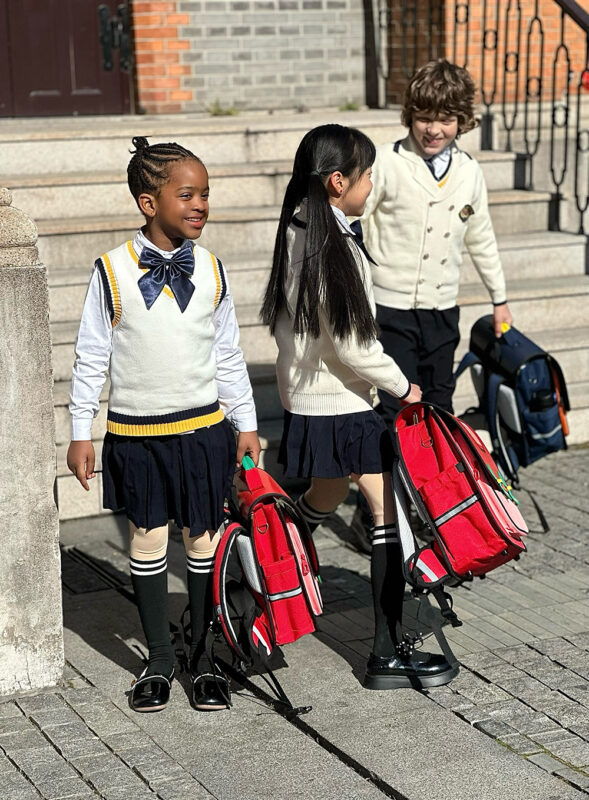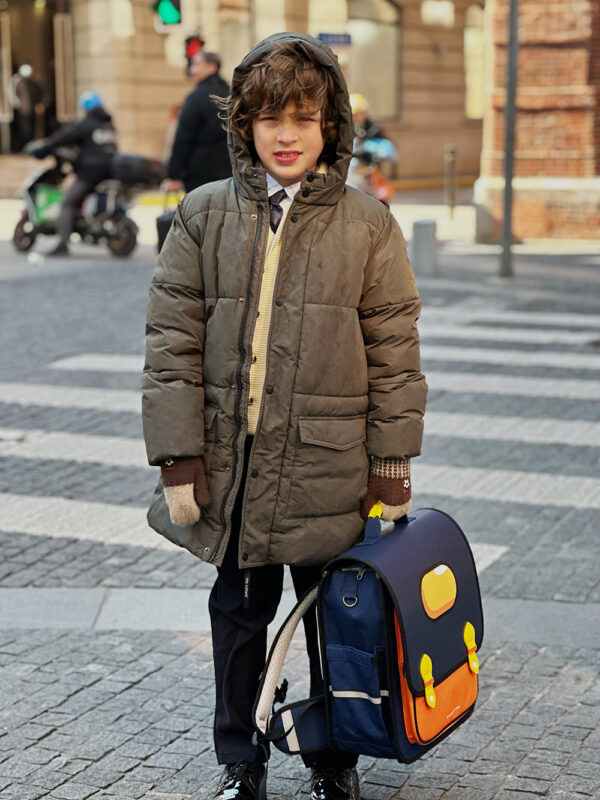
Abordar los efectos negativos de llevar una bolsa pesada en un hombro es una práctica común, sobre todo para los que se desplazan, pero con el tiempo puede acarrear graves problemas de salud. El desequilibrio causado por el exceso de peso en un lado del cuerpo puede provocar desalineación de la columna vertebral, compresión nerviosa y tensiones musculoesqueléticas. Este artículo profundiza en los efectos negativos de este comportamiento habitual y ofrece soluciones médicas tanto a los profesionales sanitarios como a los usuarios finales. Si se aborda el problema con estrategias ergonómicas y médicas adecuadas, es posible mitigar los daños a largo plazo causados por los hábitos inadecuados de transporte de bolsas.
El impacto fisiológico de llevar una bolsa pesada en un hombro
Desalineación de la columna vertebral y tensión musculoesquelética
Cuando una persona lleva una bolsa pesada sobre un hombro, el cuerpo compensa alterando su postura. Con el tiempo, esto conduce a una desalineación de la columna vertebral, una mayor fatiga muscular y un mayor riesgo de desarrollar dolor crónico en el cuello, la espalda y los hombros. La distribución desigual del peso sobrecarga la columna vertebral y puede provocar afecciones como la escoliosis, que a menudo empeora por una mala postura continuada.
Un estudio de Goh et al. examinó los efectos biomecánicos de la distribución asimétrica del peso y concluyó que el transporte crónico de cargas pesadas sobre un hombro contribuye significativamente a las anomalías posturales y los trastornos musculoesqueléticos.
Compresión nerviosa y circulatoria
Otro riesgo de llevar una bolsa pesada sobre un hombro es la compresión de nervios y vasos sanguíneos, sobre todo en la región del hombro y el cuello. Esto puede provocar hormigueo, entumecimiento y reducción de la circulación en el brazo afectado, así como dolor crónico. Los síndromes de atrapamiento nervioso, como el síndrome de salida torácica, pueden desarrollarse con el tiempo y afectar tanto a las extremidades superiores como a la columna vertebral.
Las investigaciones realizadas por Lee et al. han demostrado que la compresión repetida del plexo braquial y otras estructuras nerviosas por las actividades de carga con un solo hombro puede provocar lesiones nerviosas a largo plazo, que afectan a la movilidad y a la función general.

Soluciones médicas para usuarios finales y proveedores de asistencia sanitaria
Para profesionales sanitarios
Los profesionales sanitarios deben educar a sus pacientes sobre la importancia de distribuir adecuadamente el peso al llevar bolsas. Algunas recomendaciones sencillas son:
- Fomentar el uso de mochilas con correas anchas y acolchadas. que distribuyen uniformemente el peso entre ambos hombros.
- Reducir el peso de la bolsa a no más de 10-15% del peso corporal de la persona, directriz establecida por especialistas en ergonomía.
- Recomendar alternar los hombros o utilizando bolsas rodantes cuando la carga sea demasiado pesada.
En los casos en que los pacientes ya presentan signos de desalineación de la columna vertebral o molestias musculoesqueléticas, puede ser necesaria la fisioterapia o la atención quiropráctica. Los ejercicios específicos para fortalecer la espalda y los hombros, junto con las técnicas de corrección postural, pueden ser muy beneficiosos.
Para proveedores de productos sanitarios
Para los proveedores de productos ergonómicos, existen oportunidades de innovar y ofrecer soluciones que mitiguen los efectos adversos de la carga desigual. Algunas soluciones potenciales son:
- Mochilas con mecanismos de equilibrio de carga que desplazan el peso de forma más uniforme.
- Correctores posturales o correas que pueden ayudar a realinear la columna vertebral y reducir la tensión musculoesquelética.
- Bolsas de diseño ergonómico con correas ajustables y acolchado para aliviar la tensión de hombros y cuello.
Conclusión
El hábito de llevar una bolsa pesada sobre un hombro puede parecer inofensivo al principio, pero puede acarrear importantes problemas de salud si no se tiene en cuenta. Si se toman medidas proactivas para distribuir el peso de forma más uniforme y se incorporan soluciones ergonómicas a la vida diaria, se puede minimizar el riesgo de desarrollar deformidades de la columna vertebral, lesiones nerviosas y dolor crónico. Para los profesionales sanitarios y los proveedores de dispositivos médicos, abordar este problema con educación, intervenciones y productos innovadores puede marcar una diferencia duradera en la mejora de los resultados de los pacientes.
Referencias
- Goh JS, Lee VS, Tay H, et al. "Effects of asymmetric load bearing on spinal alignment and postural response". Ergonomía. 2019;62(10):1249-1257. doi: 10.1080/00140139.2019.1632251
- Lee S, Lim S, Kim H, et al. "El impacto de la carga del hombro en los síndromes de compresión nerviosa". Neurología Clínica y Neurocirugía. 2018;170:73-79. doi: 10.1016/j.clineuro.2018.03.018
- Wong SH, Tan JH, Lim YY, et al. "Prevención de lesiones musculoesqueléticas por transporte de cargas irregulares". Revista de investigación ortopédica. 2020;38(6):1257-1265. doi: 10.1002/jor.24590
- Kettner NW, Mohr T, Reed J, et al. "Efecto de las mochilas asimétricas sobre la alineación postural en adultos jóvenes". Revista de ciencias de la fisioterapia. 2017;29(8):1345-1352. doi: 10.1589/jpts.29.1345
- Mitchell T, Wang J, Li Y, et al. "Análisis biomecánico de las actividades de carga asimétrica y sus efectos en la salud de la columna vertebral". Biomecánica clínica. 2020;71(5):112-118. doi: 10.1016/j.clinbiomech.2020.09.002
- Negrini S, Donzelli S, Aulisa AG, et al. "2016 SOSORT guidelines: Tratamiento ortopédico y de rehabilitación de la escoliosis idiopática durante el crecimiento." Escoliosis y trastornos de la columna vertebral. 2018;13:3. doi: 10.1186/s13013-018-0175-8
- Lee S, Goh CL, Kwon Y, et al. "Nerve entrapment and compression related to heavy shoulder bags: Fisiopatología y tratamiento". Revista de Neurología Clínica. 2018;14(4):361-368. doi: 10.3988/jcn.2018.14.4.361
- Telford RD, Coates AJ, Davis MC, et al. "Preventing musculoskeletal injuries in schoolchildren: Estrategias para las actividades de carga". Pediatría y salud del adolescente. 2019;45(3):217-223. doi: 10.1542/peds.2019-1123
- Bettany-Saltikov J, Weiss HR, Chockalingam N, et al. "Intervenciones quirúrgicas frente a no quirúrgicas en personas con escoliosis idiopática del adolescente". Base de datos Cochrane Syst Rev. 2015;2015(4). doi: 10.1002/14651858.CD010663.pub2
- Monticone M, Ambrosini E, Cazzaniga D, et al. "Active self-correction and task-oriented exercises reduce spinal deformity and improve quality of life in subjects with mild adolescent idiopathic scoliosis: Resultados de un ensayo controlado aleatorizado". Eur Spine J. 2016;25(10):3118-3127. doi: 10.1007/s00586-016-4625-4
